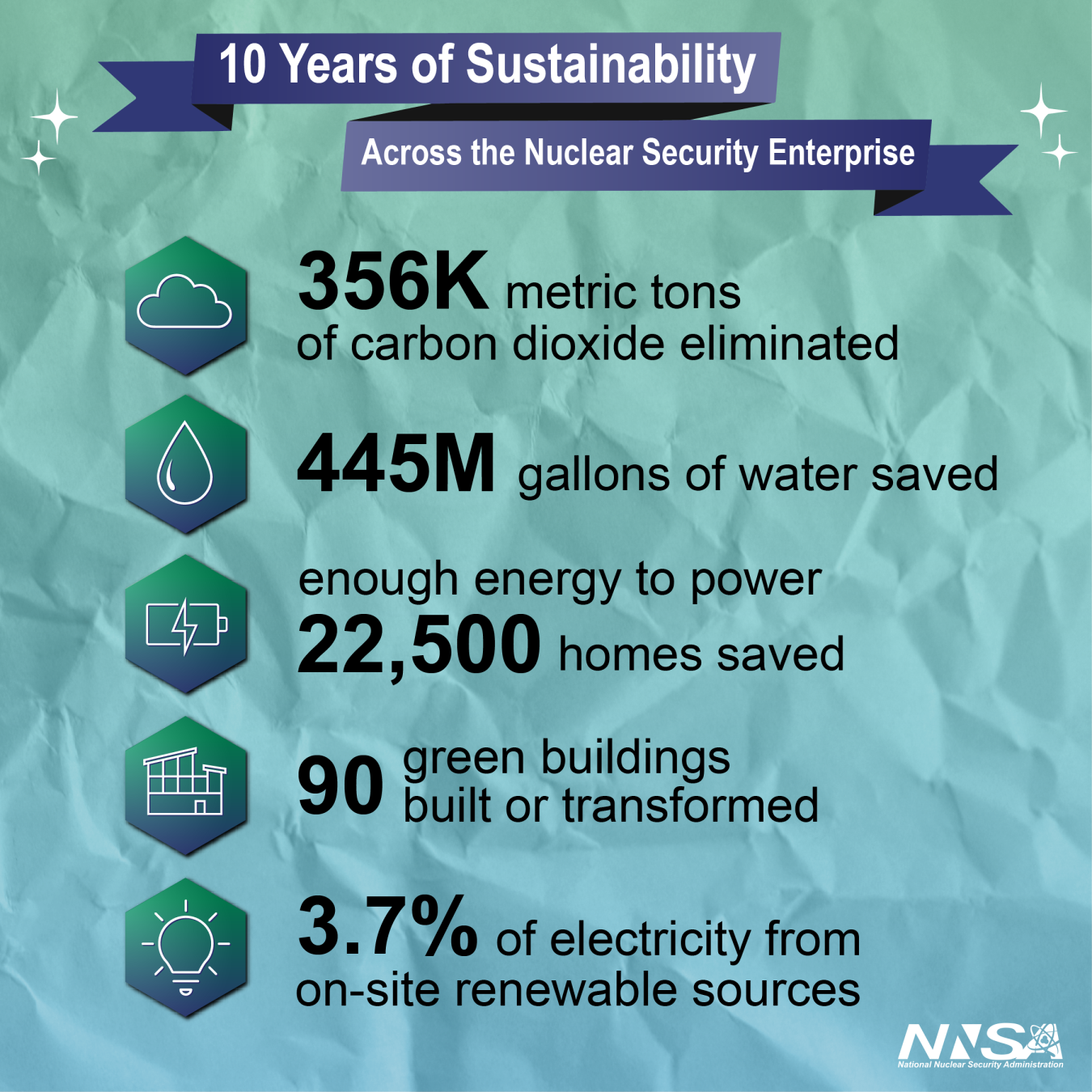How might climate change affect NNSA’s mission space? We have been working to identify, assess, and prioritize actions to increase resilience across the Nuclear Security Enterprise and mitigate risks to mission delivery.
National Nuclear Security Administration
April 25, 2024
Earth Day presents an opportunity to reflect on the relationship between our dynamic planet and the critical work that the National Nuclear Security Administration (NNSA) does every day to advance national security.
The 2023 Strategic Outlook Initiative (SOI) report was commissioned by NNSA’s Office of Policy and Strategic Planning. It makes clear that taking action now on climate change will produce a nuclear security enterprise that is more resilient to climate impacts, improve mission performance overtime, and accelerate climate and energy research and development. At the same time, failing to take changing weather and climate conditions into account may undermine current and future NNSA efforts.
The SOI climate change study, co-led by Sandia National Laboratories, Los Alamos National Laboratory, and the Nevada National Security Site, leveraged expertise across the nuclear security enterprise. The study found that each of NNSA’s missions will be affected by climate change. While some impacts may not be felt for decades, the study emphasized that NNSA cannot rest – it must start now to identify, assess, and prioritize actions to increase resilience and mitigate risks to mission delivery.
Earth Day serves as a unique occasion to explore the report’s findings, given the broader intersection of NNSA’s mission work and the environment.
Climate change-related threats, including long-term climate trends and extreme weather events, could impact the reliability and resilience of unique and critical NNSA capabilities and infrastructure. For example, NNSA facilities, especially those in arid regions, rely on varied water supplies for mission-critical functions like data centers and other process cooling needs that may be challenged by future drought and use restrictions. Energy shortages and power outages also could disrupt NNSA’s computational capabilities due to insufficient cooling. Likewise, persistent dry, warm conditions conducive to wildfire could disrupt systems testing at firing sites.
Beyond physical impacts to facilities and infrastructure, the study assesses direct impacts to NNSA’s day-to-day mission work. For example, an increased demand for nuclear and alternative energy to meet emissions reduction goals and increase energy resilience will bring challenges and opportunities for NNSA’s nonproliferation, counterterrorism, and emergency management missions.
The report outlines four high-level goals to limit the impacts of climate change on NNSA missions:
- Employ convening power - Integrate cross-domain expertise and functionality to improve enterprise climate literacy and address climate impacts on missions.
- Advance climate science and research for mission application - Engage in additional science and research to further understand the overall impact of climate change on the nuclear security enterprise, drawing on NNSA’s unique computing and modeling capabilities.
- Strengthen operational and workplace resilience - Revamp how the nuclear security enterprise functions to ensure a more adaptable and resilient workplace in the face of a changing climate. These efforts must account for infrastructure, capabilities, workforce, and supply chains.
- Prepare for new technologies - Proactively assess how new technologies developed to mitigate or adapt to climate change could impact NNSA missions and help mission partners evaluate and adapt to these new technologies.
The report is an enterprise-wide, over the horizon effort undertaken by NNSA’s labs, plants, and sites that is focused on issues impacting the long-term health and resilience of the nuclear security enterprise. For more information or to request a briefing on the report, contact NNSA’s Office of Policy and Strategic Planning (NA-1.1) at [email protected].

